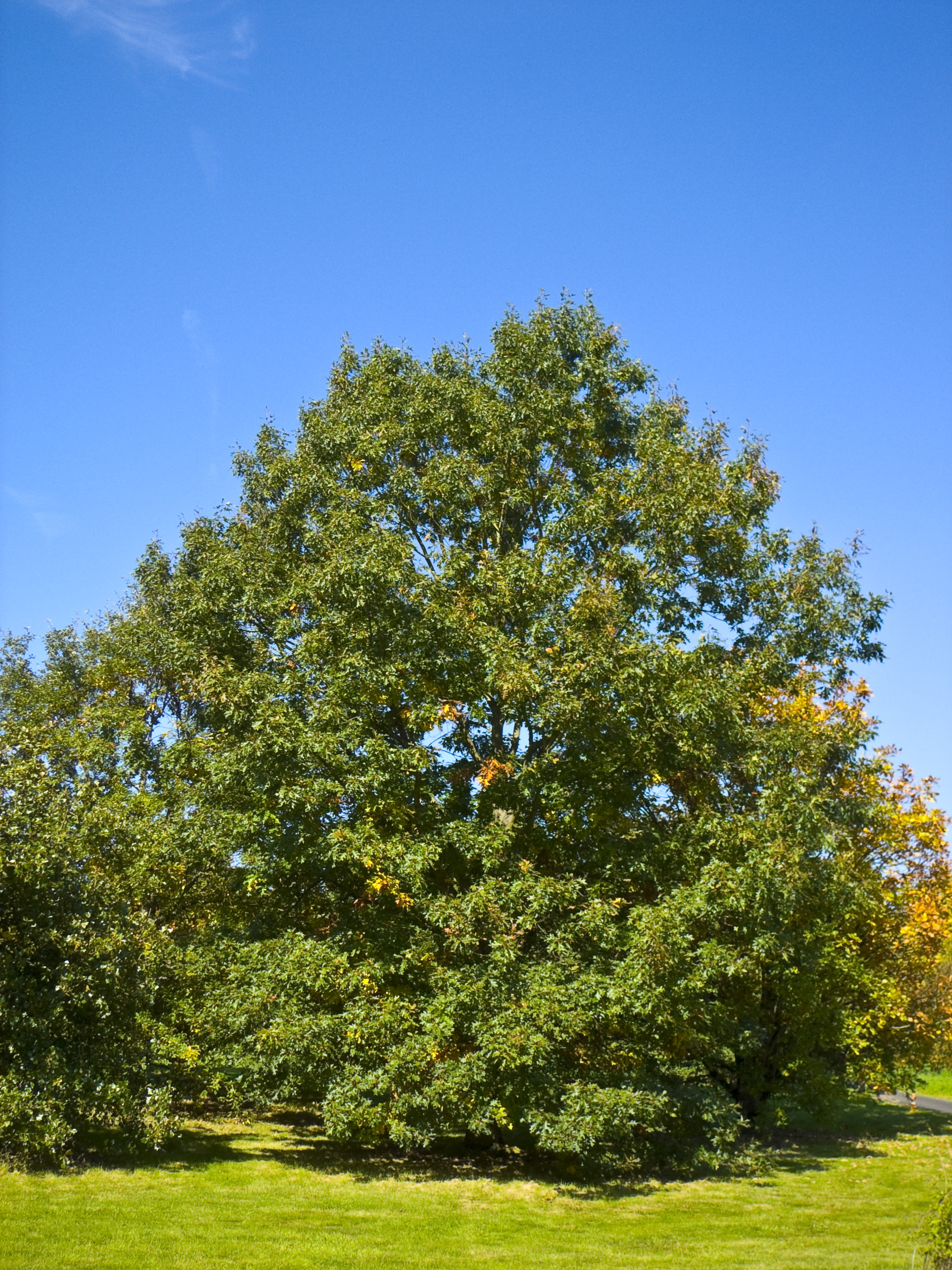- Eastern Black Oak
image_width = 240px
regnum =Plant ae
divisio = Magnoliophyta
classis = Magnoliopsida
ordo =Fagales
familia =Fagaceae
genus = "Quercus"
sectio = "Lobatae"
species = "Q. velutina"
binomial = "Quercus velutina"
binomial_authority = Lamb.Eastern Black oak ("Quercus velutina"), or more commonly known as simply Black Oak is an
oak in the red oak ("Quercus" sect. "Lobatae") group ofoak s. It is native to easternNorth America from southernOntario south to northernFlorida and southernMaine west to northeasternTexas . It is a common tree in theIndiana Dunes and other sandy dunal ecosystems along the southern shores ofLake Michigan . It is most often found in dry well draining upland soils which can be clayey or sandy in nature in most of the rest of its range. In the northern part of its range, black oak is a relatively small tree, reaching a height of 20-25 m (65-80 ft) and a diameter of 90 cm (35 in), but it grows larger in the south and center of its range, where heights of up to 42 m (140 ft) are known.Black Oak is well known to readily hybridize with other members of the red oak ("Quercus" sect. "Lobatae") group of oaks being one parent in at least a dozen different named hybrids.The leaves of the black oak are alternately arranged on the twig and are 10-20 cm (4-8 in) long with 5-7 bristle tipped lobes separated by deep U-shaped notches. The upper surface of the leaf is a shiny deep green, the lower is yellowish-brown.
The
fruit s oracorn s of the black oak are small and almost as wide as they are long. The upper half of the nut is covered by a cap of loose scales that often form a fringe around the acorn.The inner
bark of the black oak contains a yellow pigment calledquercitron , which was sold commercially in Europe until the 1940s.Named Hybrids involving Black Oak
*"Quercus x bushii" (
Quercus marilandica x velutina) - Bush's Oak
*"Quercus x cocksii" (Quercus laurifolia x velutina) - Cocks Oak
*"Quercus x demarei " (Quercus nigra x velutina) -
*"Quercus x discreta " (Quercus shumardii x velutina) -
*"Quercus x filialis " (Quercus phellos x velutina) -
*"Quercus x fontana " (Quercus coccinea x velutina) -
*"Quercus x hawkinsiae" (Quercus rubra x velutina) - Hawkin's Oak
*"Quercus x leana" (Quercus imbricaria x velutina) - Lea's Oak
*"Quercus x palaeolithicola " (Quercus ellipsoidalis x velutina) -
*"Quercus x podophylla " (Quercus incana x velutina) -
*"Quercus x rehderi" (Quercus ilicifolia x velutina) - Rehder's Oak
*"Quercus x vaga " (Quercus palustris x velutina) -
*"Quercus x willdenowiana" (Quercus falcata x velutina) - Willdenow's OakObsolete scientific name
An obsolete old name is "Quercus tinctoria". [http://en.wikipedia.org/wiki/New_International_Encyclopedia]
External links
* [http://www.cas.vanderbilt.edu/bioimages/species/frame/quve.htm "Quercus velutina" images at bioimages.vanderbilt.edu]
* [http://www.efloras.org/florataxon.aspx?flora_id=1&taxon_id=233501095 Flora of North America: "Quercus velutina"] [http://www.efloras.org/object_page.aspx?object_id=6900&flora_id=1 Range
]
* [http://www.na.fs.fed.us/pubs/silvics_manual/volume_2/quercus/velutina.htm Silvics of North America: "Quercus velutina"]
* [http://www.cnr.vt.edu/dendro/dendrology/syllabus/factsheet.cfm?ID=39 Virginia Tech Department of Forestry fact sheet on "Black Oak"]
Wikimedia Foundation. 2010.

